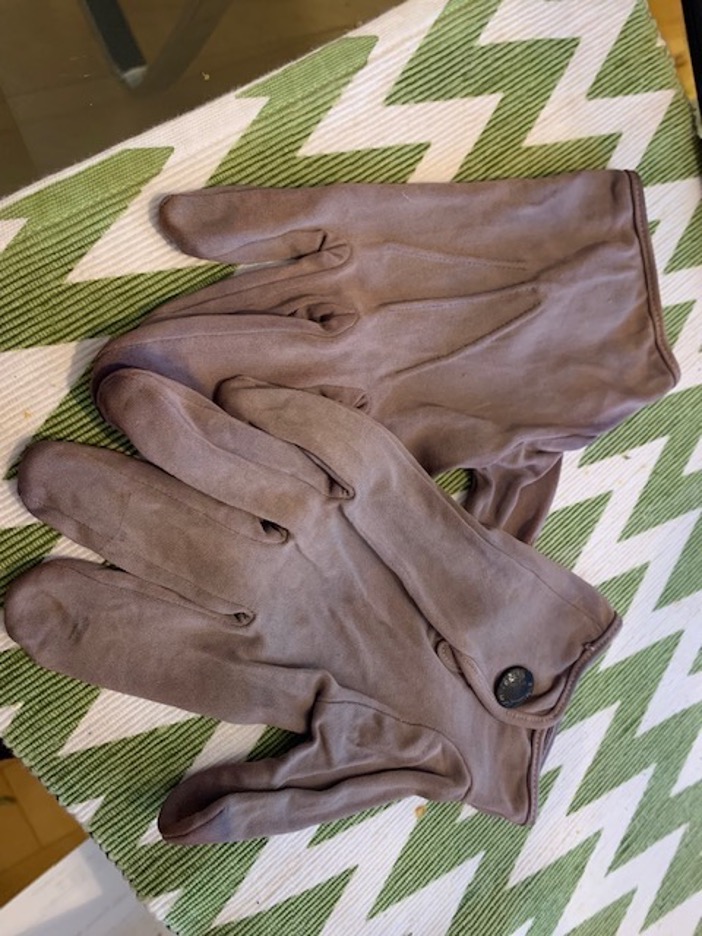Mickey’s Gloves

Mickey Mouse is trending in memes; as of January 1, 2024, he entered the public domain. Disney fought for years to block this day, but to no avail. Now the mouse can be made to say or do any number of scandalous and snarky things: social media is awash with creepy Mickeys such as the maniacal murderer Steamboat Willy. Girlfriend Minnie, like other works created in 1928, also entered the public domain. I can’t tell you what Minnie and Mickey have been pictured doing these past days of the New Year, but I can tell you that this is not what “Public Domain” is meant to achieve. Ideally an image in the public consciousness for a certain number of years is meant to be a jumping-off point for further creative expression. This image is supposed to provide authors, artists, and fellow creatives with the spark of raw material to create something NEW.
However, in all these meme images, Mickey retains ONE vital piece of clothing: those big white gloves that stop at the wrist and fasten at the back with a button, with those distinctive three-stitch lines that radiate from the fingers tapering to the wrists. Walt Disney became the first animator to put white gloves on a character (Mickey Mouse) when he made the cartoon “The Opry House” in 1929.
AG sends me a pair of men’s gloves in gray – not designed for cold weather but made of rayon, a fabric that is semi synthetic, approximating silk. The invention of rayon is important to our dating of the gloves: rayon was discovered in France in the mid-19th cent. but not marketed in America until 1911.
Today, we don’t see gloves on a man unless it is COLD. But gloves, in the 17th, 18th, and 19th, and early 20th centuries, were de rigueur for gentlemen as it was unseemly for a gentlemen’s bare hand to touch a lady. The two main themes of the late 19th and early 20th centuries – sexuality and hygiene – were represented by men’s GLOVES. A man’s hand, uncovered, was a threat; women needed to be protected, but a man’s hand needed protection, too; from dirt.
Hygiene necessitated gloves: cities were dirty, and gloves were a protective layer. The late 19th and early 20th cenury was an era of the discovery of bacteria and germs; this was the era of white tiled baths to symbolize cleanliness. We still think of the “white glove” test.
Gloves were integral to a man’s wardrobe, says the website “Vintage Dancer,” from which I learned about the fashions of gloves in this period for men. Men wore various styles of “day” gloves, but a man did not dare to dance with a woman in the evening without a pair.
Thus, protocol demanded two categories of gloves for men: day (or street) gloves, and evening gloves. The upper class American and British man of the late 19th and early 20th century conducted his day (without working at jobs as we do) by going to the Bank, the Church, the Club, the Library, the Restaurant; and for these occasions, the day glove was worn, short and stopping at the wrist. Upper class men wore gloves of the finest leather in a perfect snug fit.
The colors worn were tan/cream/grey, with those classic three lines of top stitching, and (like Mickey’s) a back button closure. After 1910, when the metal snap was invented, the classic pearl back button was history.
Not a trace of dirt was ever to be found on a gentleman’s glove.
If he attended an evening affair in the early 20th century, such as a dance, he would be expected to wear evening gloves of white goatskin leather, necessary to prevent a sweaty hand on a lady’s hand (horrors), or a bare touch on the back (even worse). If a man received an invitation for a black or white tie event, it was expected that he wear white gloves.
The 1930s brought a new fashion for men’s gloves for formal situations such as state weddings: this was the light grey glove of washable goatskin.
AG’s gloves, his grandfather’s day gloves, were made by the premier glove company: the label, as well as the lettering on the snap, says “Fownes Make.” The Fownes Brothers and Company was established in 1777 in Worcester, UK, a center for glove manufacturing.
The company opened a sales office in NYC in 1887, their global headquarters were located on Broadway. In 1903 the company opened U.S. factories in Gloversville and Amsterdam, NY. AG’s men’s 1911 gloves are valued at $25.






